Use of Indigenous Knowledge in Teaching Mathematics and Science
Arzu Sardarli
1. Author’s Information & Abstract
Author’s Information
Arzu Sardarli, First Nations University of Canada, 1301 Central Avenue Prince Albert, SK, S6V 4W1; asardarli@fnuniv.ca
Professor of Physics and Mathematics, Indigenous Knowledge and Science
Phone: 1.306.765.3333 ext. 7338
Toll free: 1.800.267.6303
Fax: 1.306.765.3330
Publishing Information
Published March 2024
Abstract
This module is constructed based on materials collected within my research and community-based projects at the First Nations University of Canada and targets three groups of audience: learners, educators and researchers. The materials have been created in three formats: publications, Power Point Presentations and videos. My intention is to address the importance, feasibility and advantage of the holistic way of teaching Science and Mathematics in an example of the integration of modern Science and Indigenous Knowledge elements.
2. Introduction
It is remarkable that the word “Science” that we educators use as a title for the group of subjects (Physics, Biology, Chemistry, etc.) taught in academia, is translated into many languages (Arabian, Ukrainian, Turkish …) as “Knowledge”, giving the meaning of gaining and analysis of integrated information about both, the Nature and Community. This is not just a linguistic nuance. I try to bring elements of the Indigenous Knowledge and Art to the teaching of my post-secondary Mathematics and Science courses in order to add this missing piece to the puzzle, combining the so-called “Western” and Indigenous Knowledge. My view of this integration is very close to the “Etuaptmumk” – Two-Eyed Seeing principle explained by Elder Albert Marshall, which refers to “learning to see from one eye with the strengths of Indigenous knowledge and ways of knowing, and from the other eye with the strengths of Western knowledge and ways of knowing … and learning to use both these eyes together, for the benefit of all”.
In collaboration with my colleagues from the First Nations University of Canada and the University of Regina, I have developed examples with Indigenous elements for Physics, Mathematics and Statistics courses of our universities. Within my research and community-based projects, I interviewed Indigenous Elders and Knowledge Keepers in order to collect the information for these examples. The examples are included in the textbooks that I co-authored and course materials offered by the First Nations University of Canada and the University of Regina. These projects were supported by The Natural Sciences and Engineering Research Council of Canada (NSERC), Health Canada, Heritage Canada, First Nations University of Canada and the University of Regina.
I used some findings of my research projects to develop examples with Indigenous elements for my university courses. Modern technologies allow us to incorporate the original interviews into the teaching materials in various media formats.
Power Point Presentation of Projects Summary
3. References
Books
Ermine, Willie, Arzu Sardarli, and Ida Swan. 2017. Cree Dictionary of Mathematical Terms for Elementary Classes. Regina: University of Regina. https://creeliteracy.org/2020/06/15/cree-dictionary-of-mathematical-terms/.
Sardarli, Arzu. 2021. Studies of Physical Parameters of Indigenous Artifacts: Collecting and preserving the relating oral stories. Regina: University of Regina. http://indigenous-artifacts.ca/brochure/.
Sardarli, Arzu, Evelyn Siegfried, and Skylar Wall. 2021. Studies of Physical Parameters of Indigenous Artifacts. Collecting and preserving the relating oral stories. Regina: University of Regina. http://indigenous-artifacts.ca/catalogue/.
Sardarli, Arzu, and Ida Swan. 2022. Cree Dictionary of Mathematical Terms with Visual Examples. Regina: University of Regina. https://opentextbooks.uregina.ca/creemathdictionary/.
Articles
Marshall, Albert. n.d. “Two-Eyed Seeing.” Institute for Integrative Science & Health. Accessed September 16, 2023 . http://www.integrativescience.ca/Principles/TwoEyedSeeing/.
Sardarli, Arzu. 2013. “Use of Indigenous Knowledge in Modeling the Water Quality Dynamics in Peepeekisis and Kahkewistahaw First Nations Communities.” Pimatiswin: A Journal of Aboriginal and Indigenous Community Health 11(1): 55-63.
Sardarli, Arzu, Andrei Volodin, Khaysa Osmanli, and Evelyn Siegfried. 2021. “Statistical Analysis of Physical Parameters of Indigenous Artifacts.” Lobachevskii Journal of Mathematics 42 (13): 3224-3229. https://doi.org/10.1134/S1995080222010188.
Sardarli, Arzu, Shauneen Pete, Thuntida Ngamkham, Sujitta Suraphee, and Andrei Volodin. 2019. “The Determinants of Annual Income in Aboriginal and Non-Aboriginal Communities: Comparative Statistical Analysis.” Thailand Statistician 17(2): 235-241; https://ph02.tci-thaijo.org/index.php/thaistat/article/view/202300/141174.
4. Wiseman Mathematics Contest
I initiated the Wiseman Mathematics Contest in 2008 at the First Nations University of Canada. The start-up of the project was supported by The Natural Sciences and Engineering Research Council of Canada within the PromoScience program. Since then, thousands of First Nations students from across Canada in grades 4, 5, and 6 have participated. The purpose of the Contest is to motivate young students in First Nations schools in Saskatchewan, and other provinces, to learn Mathematics in a competitive environment.
The Wiseman Mathematics Contest meets the needs of Mathematics teachers in First Nations Schools who want to assess their students’ problem-solving skills in a competitive environment. Along with the contests, First Nations University also develops and delivers preparatory materials. Mathematics teachers prepare their students for the contest using these materials, but can also use the materials to immerse the students in alternative problem-solving, expanding on curriculum. Many teachers use these materials for extracurricular activities.
Students participate in the project voluntarily. The contest provides the opportunity to work on non-traditional problems in a non-mandatory but competitive environment, which is atypical for Western schools.
In 2016, the Regional Centre of Expertise (Saskatchewan) on Education for Sustainable Development Recognition Program acknowledged the Wiseman Mathematics Contest as an innovative project. It noted that the project has helped increase the capacity for sustainable development in the Saskatchewan region and contributed to the advancement of the UNESCO Global Action Programme on Education for Sustainable Development.
Project Website
“Wiseman Mathematics Contest.” Facebook. https://www.facebook.com/WisemanContest.
Power Point Presentation
5. Cree Dictionary of Mathematical Terms
In 2015 – 2021, we developed the first explanatory Cree Dictionary of Mathematical Terms in paper (Willie Ermine, Arzu Sardarli, Ida Swan) and online (Arzu Sardarli, Ida Swan) formats. The project was supported by the First Nations University of Canada and the University of Regina. The Dictionary was reviewed by Elders George McLeod and Jerry Saddleback, Indigenous academics Solomon Ratt and Lionel Peyachew, educators Nelson Benjamin Merasty and Steven Swan. The Indigenous artist Larissa Kitchemonia participated in developing visual examples. This project was recognized by Lyle Benko Future Generations Award of the Saskatchewan Regional Centre of Expertise.
Power Point Presentations
Cree Dictionary of Mathematics Terms
Images
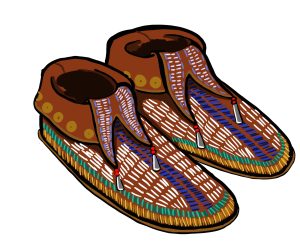

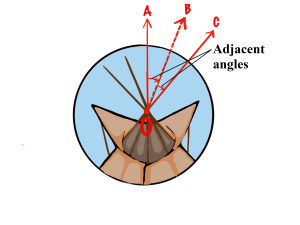

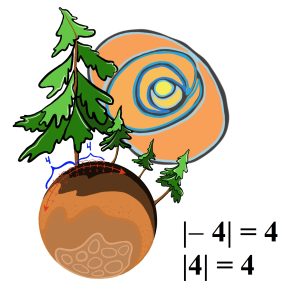
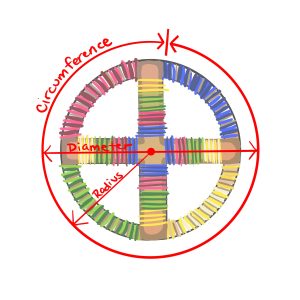

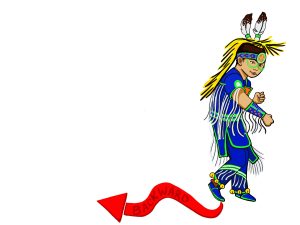
6. Developing Mathematical Model of Water Quality Dynamics using Indigenous Knowledge
This project was conducted in collaboration with the Kahkewistahaw and Peepeekisis First Nations communities. Within the project, we interviewed Indigenous Elders and specified criteria to evaluate the water quality. Community members were asked to evaluate water quality in their communities based on the determined criteria. Using the statistical analysis of the collected data, we developed a mathematical model of the water quality dynamics using the Indigenous way of evaluating the water quality.
Power Point Presentation
Developing Mathematical Model of Water Quality Dynamics using Indigenous Knowledge
7. Studies of Physical Parameters of Indigenous Artefacts; Collecting and Preserving the Relating Oral Stories
This project was conducted by scholars from the First Nations University of Canada, Royal Saskatchewan Museum, University of Regina and University of Saskatchewan in collaboration with Sturgeon Lake and Pelican Narrows First Nations communities in Canada. The objectives of the project were (i) to develop a research ethics protocol for collecting, studying and preserving Indigenous artifacts; (ii) to determine physical parameters of artifacts from communities and Royal Saskatchewan Museum collections; and (iii) to collect oral stories in communities. Within the project, we managed consultations with Elders and Indigenous Knowledge Keepers. Two workshops were organized in the communities. Indigenous students were trained to work in the communities. The laboratory measurements were carried out at the Scanning Electron Microscope Laboratory of the University of Alberta, the Saskatchewan Isotope Laboratory of the University of Saskatchewan and the André E. Lalonde Accelerator Mass Spectrometry Laboratory of the University of Ottawa. We analyzed the data obtained from the measurements of physical parameters of artifacts collected in these communities and selected from the Royal Saskatchewan Museum collections. The purpose of the statistical analysis was to determine the similarities of artifacts with respect to their chemical compositions.
Project Website
“Studies of Physical Parameters of Indigenous Artifacts. Collecting and preserving the relating oral stories.” http://indigenous-artifacts.ca/.
Power Point Presentation
8. Use of Indigenous Elements in Physics Courses
Power Point Presentation
Use of Indigenous Elements in Physics Courses
Videos and audios
This section includes educational materials with Indigenous content that I developed for introductory post-secondary Physics courses within various projects. Indigenous Elders, Knowledge Keepers and students were invited to participate in developing materials relating to energy, heat, motion, friction, and sound. Elders and Knowledge Keepers were interviewed within the projects and shared their knowledge and experience about the Indigenous teepees, dog sleds and drums. I prepared examples and exercises for introductory physics courses based on the interviews. The original audio and video materials also are included in this section. The projects were supported by the First Nations University of Canada and the University of Regina.
Interview with Elder Florence Allen – Part 1 (the project was supported by the University of Regina)
Interview with Elder Florence Allen – Part 2 (the project was supported by the University of Regina)
Drum making 1 (the project was supported by the University of Regina)
Drum making 2 (the project was supported by the University of Regina)
Drum making 3 (the project was supported by the University of Regina)
Drum making 4 (the project was supported by the University of Regina)
Interview with Elder Margaret Reynolds (the project was supported by the University of Regina)
9. Use of Indigenous Elements in Statistics Courses
Power Point Presentation
Use of Indigenous Elements in Statistics courses
Videos
This section includes educational materials with Indigenous content that I developed for introductory Statistics physics courses within various projects. Indigenous Elders, Knowledge Keepers and students were invited to participate in developing materials relating to Indigenous games based on probability. Elders and Knowledge Keepers were interviewed within the projects and shared their knowledge and experience about the Indigenous hand games and tournaments. Based on the interviews, I prepared examples and exercises for Statistics courses. These materials will also be used in the textbooks I am writing for introductory Statistics courses. The original video materials are included in this section. The projects were supported by the First Nations University of Canada and the University of Regina.


Feedback/Errata